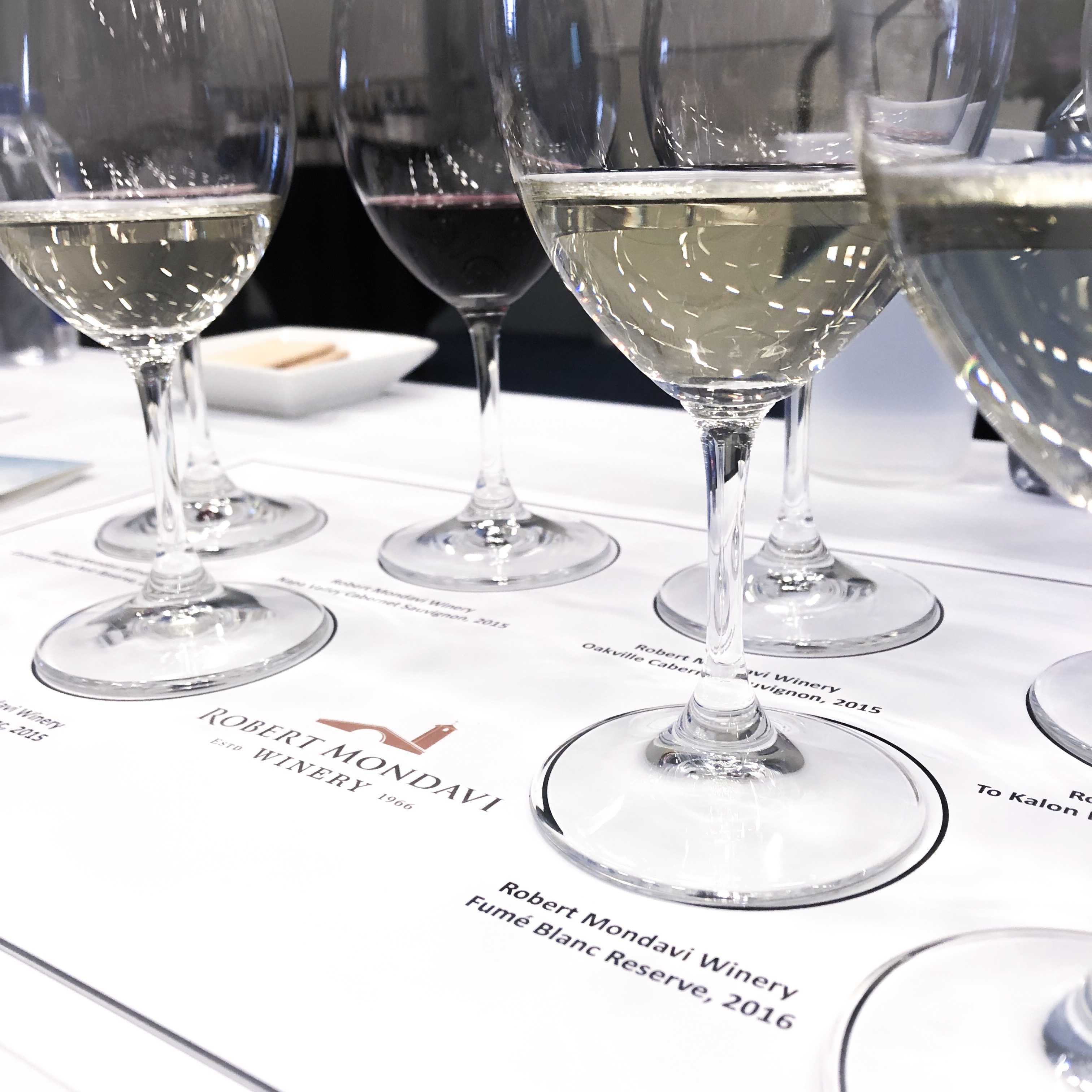A few months back I sat in on seminar during the Vancouver International Wine Festival. It wasn’t just any seminar, it was a dive into Robert Mondavi, his path to wine, a peek at his family life and of course his winery and subsequent brands.
Mondavi was an integral part of launching the Vancouver Wine Festival 41 years ago and has been an esteemed guest of the event throughout the years. His legacy is an honoured component of VIWF, which is why when the seminar doors opened I scurried to the front row. I was eager to absorb the stories and musings of Genevieve Janssens, Mondavi’s Chief Winemaker, and Mark de Vere, RMW’s Master of Wine.
HOW IT ALL STARTED
Mondavi’s parents emigrated from Italy to Minnesota, which was where Robert was born. From there, they moved to Lodi, California where they started a fruit packing company. The success of this company was in part due to prohibition. The law stated that it was illegal to manufacture, sell or transport liquors containing alcohol. However, one could market the grapes or grape juice and sell them anywhere in the country. If by chance, fermentation happened during its transport – then that was simply a welcomed risk by the purchaser and a workaround for grape growers who were biding their time until prohibition was no longer.
THE ORIGIN
Robert Mondavi put the Napa Valley on the map starting with the original winery being built in 1966. He travelled tirelessly across the globe, selling his wine with enthusiasm and charisma. One of the standout attributes of his wines was the cooling effect of the Pacific Ocean. Today, 95% of wine made in California comes from grapes sourced within 200 kilometres of the ocean. The ocean breeze and coastal fog create a priceless combination that is key to making notable wine in Napa.
LET’S TALK FUMÉ
From the To Kalon vineyards to the RM Private selection to Woodbridge, the Mondavi portfolio is vast and varied. Mondavi is credited with shifting labels from generic names to specifying varietal; a practice that is now standard among new world wines. He also revolutionized a once unpopular style: dry, oaked Sauvignon Blanc. Once he started identifying it as ‘Fumé Blanc’, popularity gained and it became an icon wine for the region.
THE MONDAVI LEGACY
UC Davis is home to two of Mondavi’s legacies. In 2002, the Robert and Margrit Mondavi Centre for the Performing Arts opened as a result of a $10 million dollar donation. Later, Mondavi’s $25 million dollar donation helped establish the Robert Mondavi Institute for Wine and Food Science.
Mondavi’s legacy also lives on in the people that continue to create his wines. Geneviève Janssens has been with the Robert Mondavi Winery since 1978. After becoming Director of Production at Napa’s Opus One Winery in 1989, she returned to RMW in 1997 as Director of Winemaking. Janssens character is naturally humble and modest. She made several unpretentious remarks throughout the seminar citing teamwork as the secret to her success: “We have a good team… Napa (the terroir) makes good wine… we keep it simple” she would say in a soft French accent.
Leading the seminar with exuberance and passion was Mark de Vere, one of only 52 masters of wine in the US. He left attendees with a few lessons learned from being a part of the Mondavi wine family, most importantly, that generosity is a key piece of the winery’s philosophy. Be generous with knowledge, with kindness and with enthusiasm. And that generosity was felt throughout the room that day.
One final remark from Mark was about curiosity. His attempt to define ‘fine wine’ has led him to be curious and to find new layers within the wine. Whether it’s a Mondavi wine or not, every sip should leave you wanting another and should welcome intrigue and excitement. Without a doubt, I felt intrigued and excited to be a part of such an eye-opening and heart-warming seminar.




